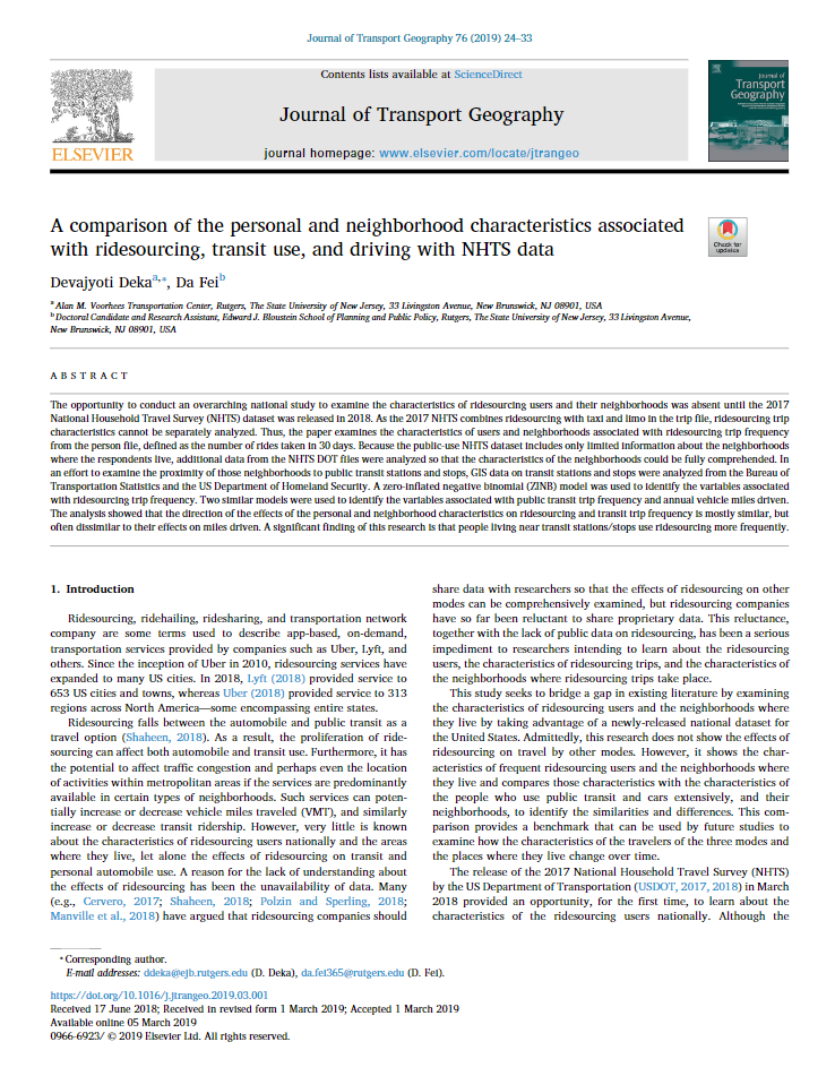Abstract
The opportunity to conduct an overarching national study to examine the characteristics of ridesourcing users and their neighborhoods was absent until the 2017 National Household Travel Survey (NHTS) dataset was released in 2018. As the 2017 NHTS combines ridesourcing with taxi and limo in the trip file, ridesourcing trip characteristics cannot be separately analyzed. Thus, the paper examines the characteristics of users and neighborhoods associated with ridesourcing trip frequency from the person file, defined as the number of rides taken in 30 days. Because the public-use NHTS dataset includes only limited information about the neighborhoods where the respondents live, additional data from the NHTS DOT files were analyzed so that the characteristics of the neighborhoods could be fully comprehended. In an effort to examine the proximity of those neighborhoods to public transit stations and stops, GIS data on transit stations and stops were analyzed from the Bureau of Transportation Statistics and the US Department of Homeland Security. A zero-inflated negative binomial (ZINB) model was used to identify the variables associated with ridesourcing trip frequency. Two similar models were used to identify the variables associated with public transit trip frequency and annual vehicle miles driven. The analysis showed that the direction of the effects of the personal and neighborhood characteristics on ridesourcing and transit trip frequency is mostly similar, but often dissimilar to their effects on miles driven. A significant finding of this research is that people living near transit stations/stops use ridesourcing more frequently.
